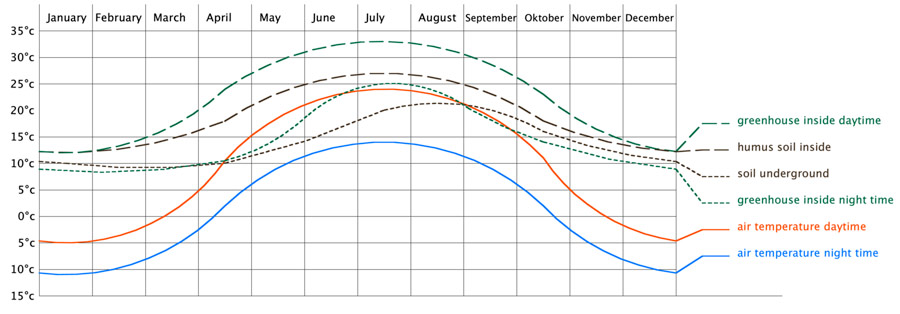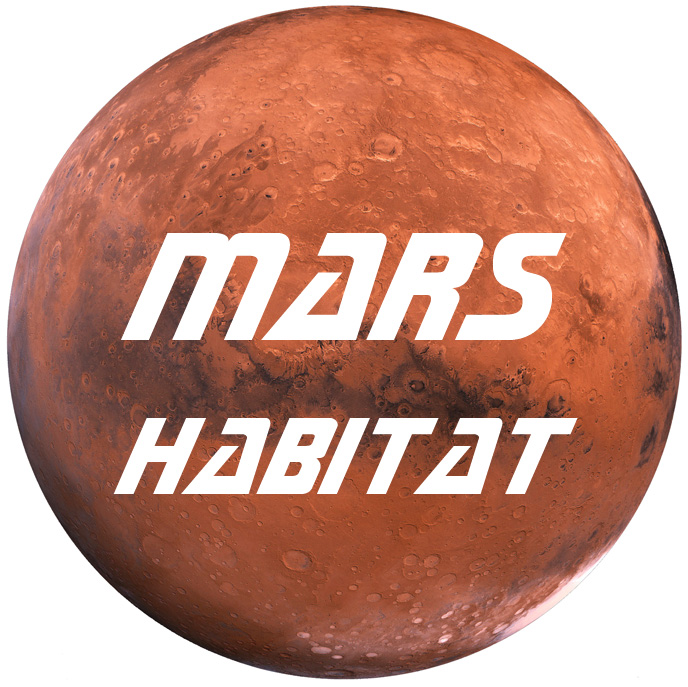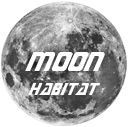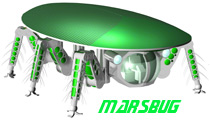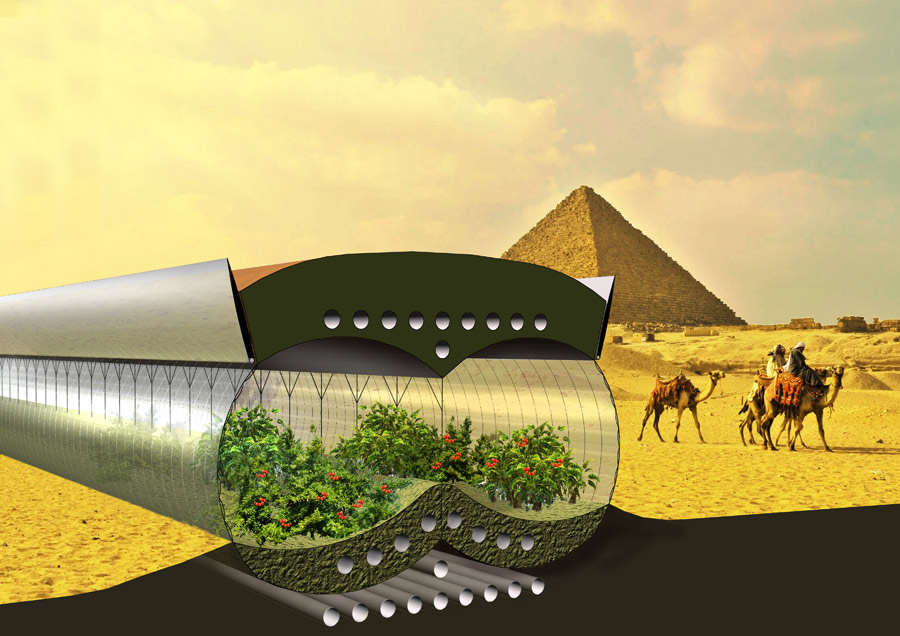
Applications on Earth
Applications on Earth
The concept of Pneumo-Planet can also be adapted and simplified for an inflatable greenhouse in the desert.
Advantages compared to ordinary greenhouses
1; There is no loss of water in the closed space. Water vaporizes during the day and condensates at night on the walls and ceiling, from where is flows back to the soil.
2; You need a lot less building material, since an inflatable structure does not need any beams and struts.
3; The thick deposit of soil on the ceiling shields the strong sun radiation that comes from high angle at noon. From the sides facing North and South diffuse light enters, as well as welcomed sunlight from flat angle in winter.
4; Pipes are guided through the soil above the ceiling und underneath the structure. At night time when temperature considerably drops cold air is blown through these pipes and cools the soil thus the cool mass of the soil absorbs heat from the interior space through its cool surface.
Since we have normal atmospheric pressure on earth, the indoor volume only needs to be inflated up to 200 mbar, enough to support the weight of a 1 meter thick deposit of sand on the ceiling.
Sahara: 25° latitude
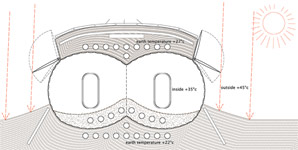
July daytime. Outside temperature +45°:
Sunlight enters diffusely from north and south. The cool masses of sand absorb heat and cool down the interior space to +34°.
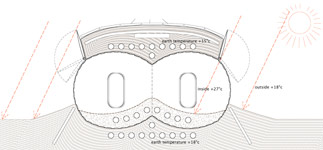
January daytime. Outside temperature +18°:
Sunlight enters diffusely from north and in a 45° angle from south and heats up the indoor space to +27°.
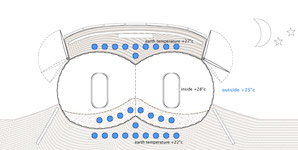
July night time. Outside temperature +25°:
Cool air is blown through the pipe system and cools down the soil
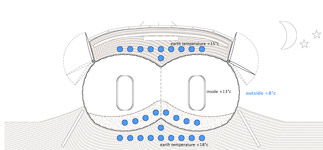
January night time. Outside temperature +8°:
Cool air is blown through the pipe system and cools the soil down to +13c. Indoor temperature is +13c as well
Annual temperature charts for Pneumo-Planet greenhouse in the Sahara desert, 25°N
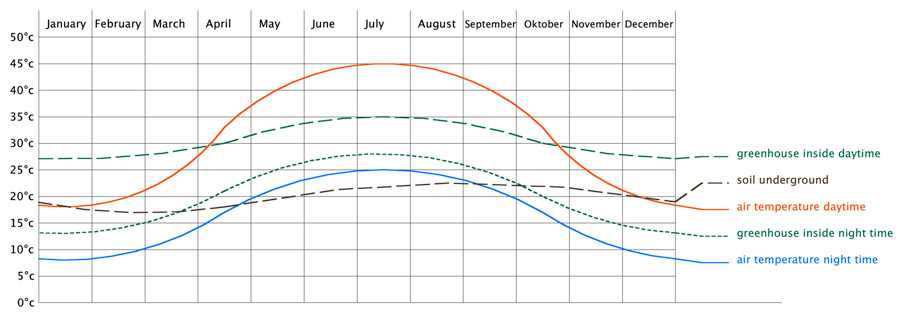
The pneumo-planet greenhouse concept also makes sense in cold climates, since it also works providing a warmer indoor climate without additional heating. Unlike for the desert greenhouse even additional sunlight is guided inside via mirrors. The soil is not cooled at night time, but heated through warm air at daytime in summer. Only the southern front, from where direct sun radiation can be expected, is transparent, while the north and the ceiling is covered with a thick layer of soil for heat storage and heat insulation
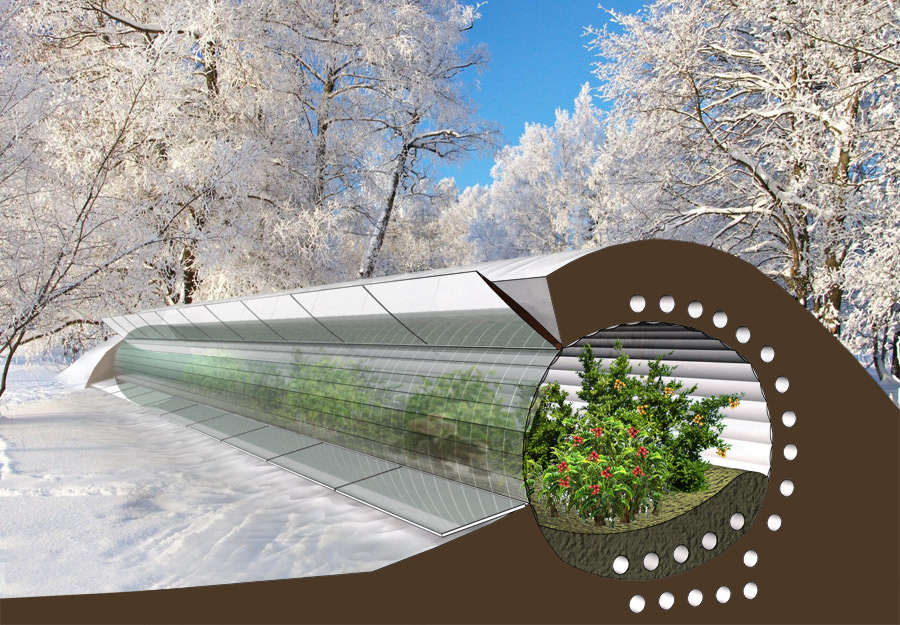
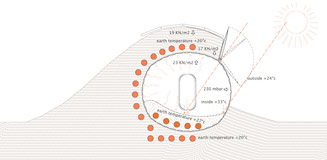
July daytime. Outside temperature +24°:
Sunlight enters in a 45° angle from south. Warm air is blown through the pipe system and heats up the soil. The hot indoor air is blown through a separate pipe system in the substrate layer. The temperature of the soil still is cooler than the outside air temperature, so temperature is kept below +33°c inside.
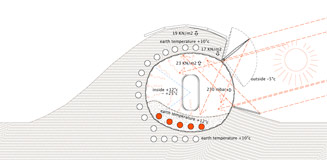
January daytime. Outside temperature -5°:
Sunlight enters in a 15° angle from south. Additional sunlight is guided inside by mirrors. The indoor space is heated up to +12°c which short time peaks up to +24°c on a clear sunny day. The hot indoor air is blown through a separate pipe system in the substrate layer, which is heated up to +12°c. The temperature of the soil still is +10°c.
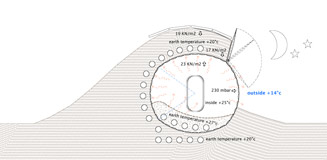
July night time. Outside temperature +14°:
No air circulation through the pipe system. Temperature drops to +25°c inside.
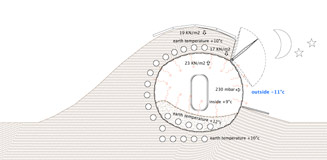
January night time. Outside temperature -11°:
No air circulation through the pipe system. Temperature drops to +9°c inside.
